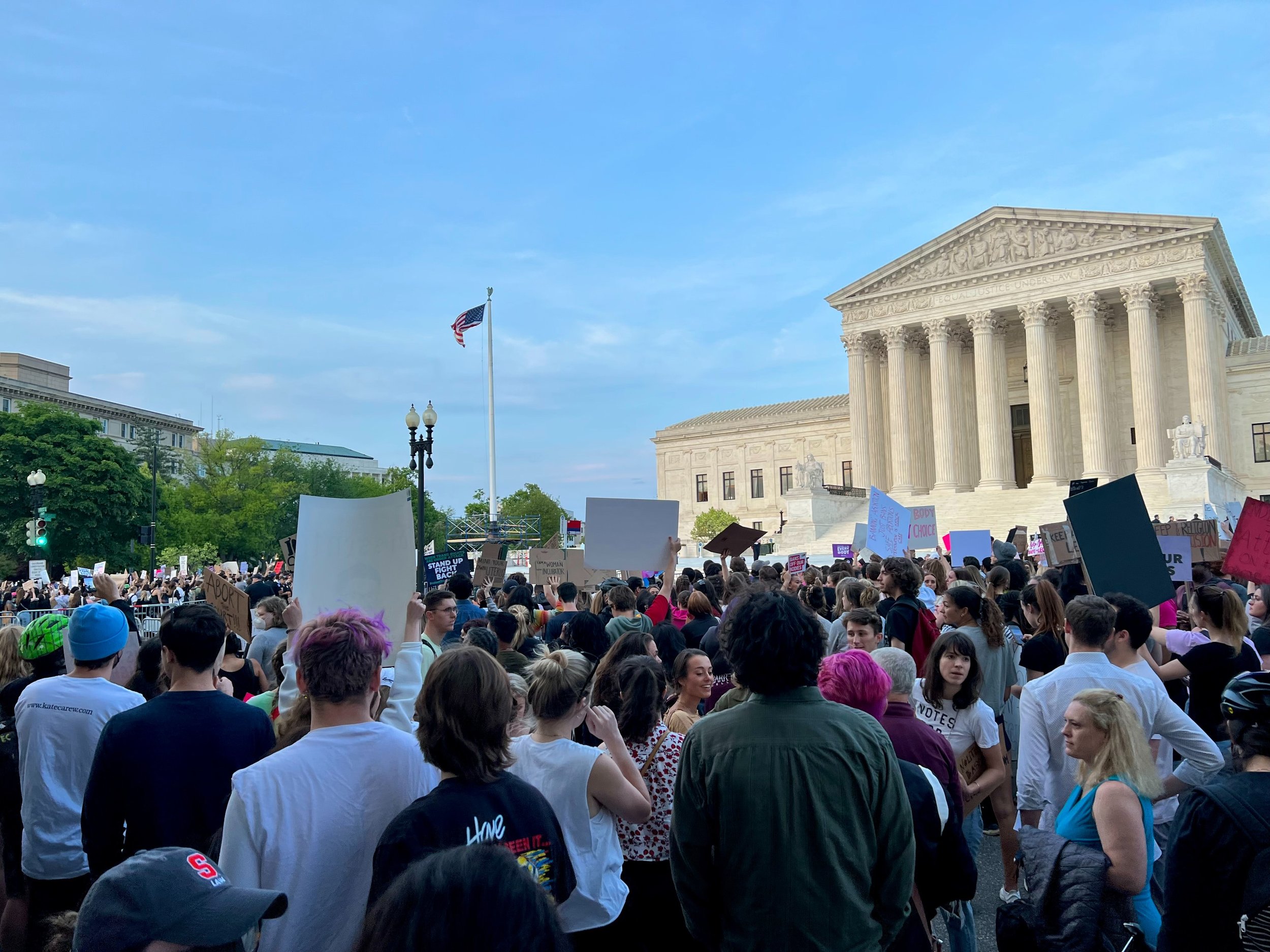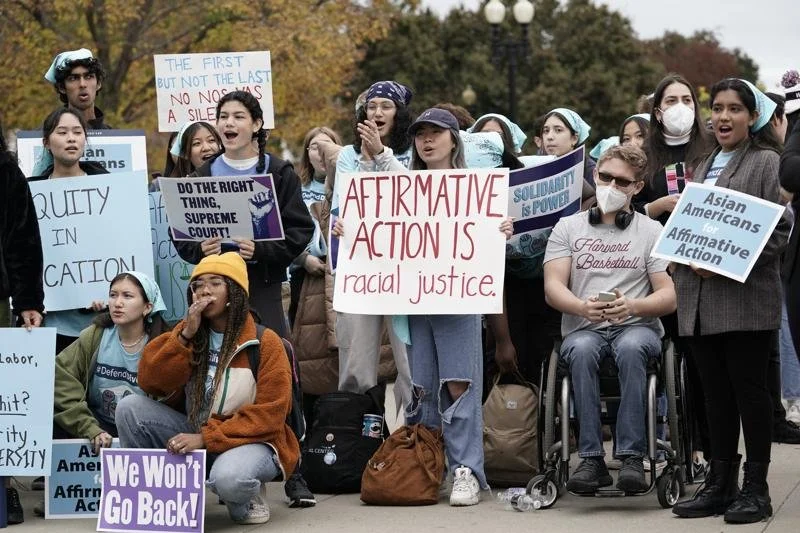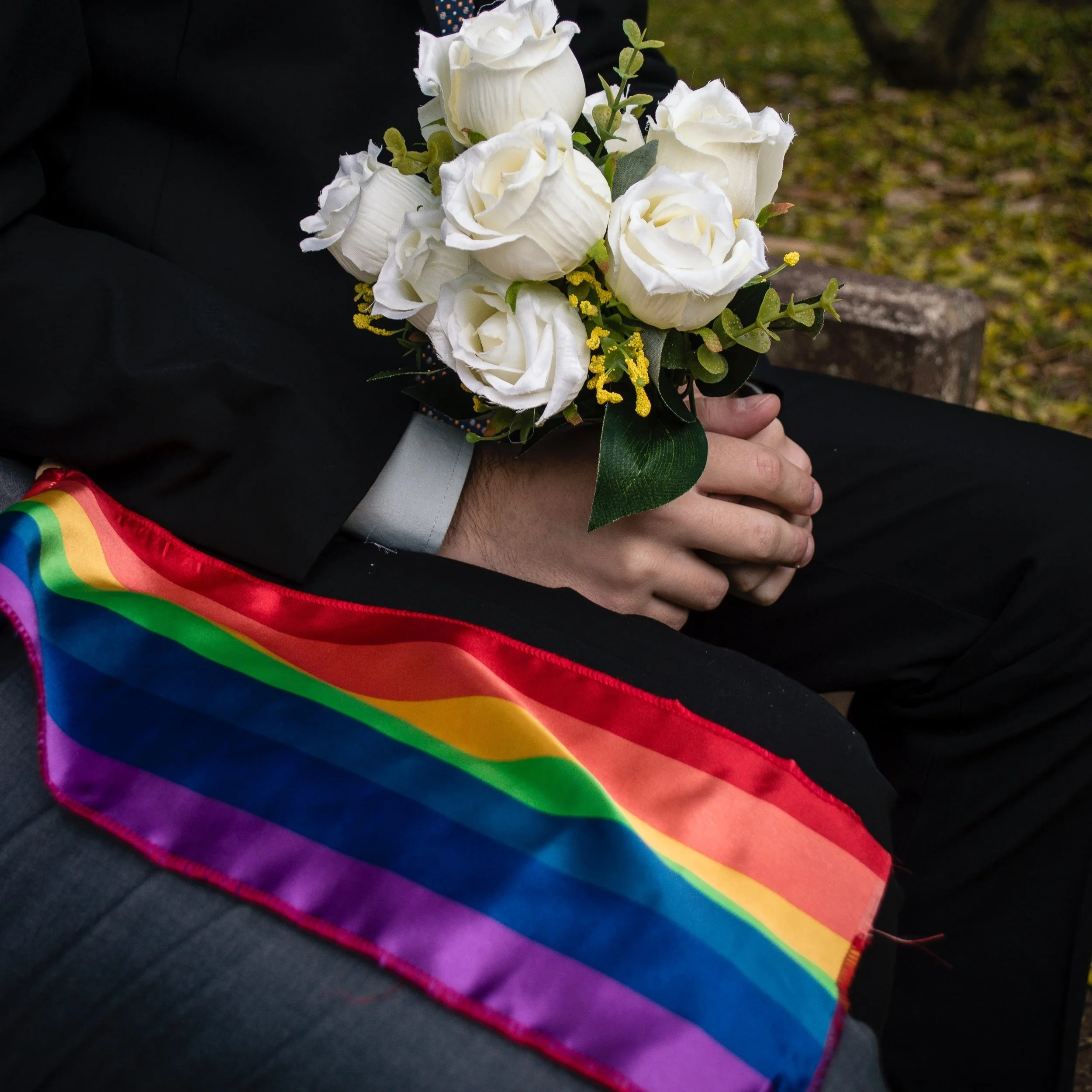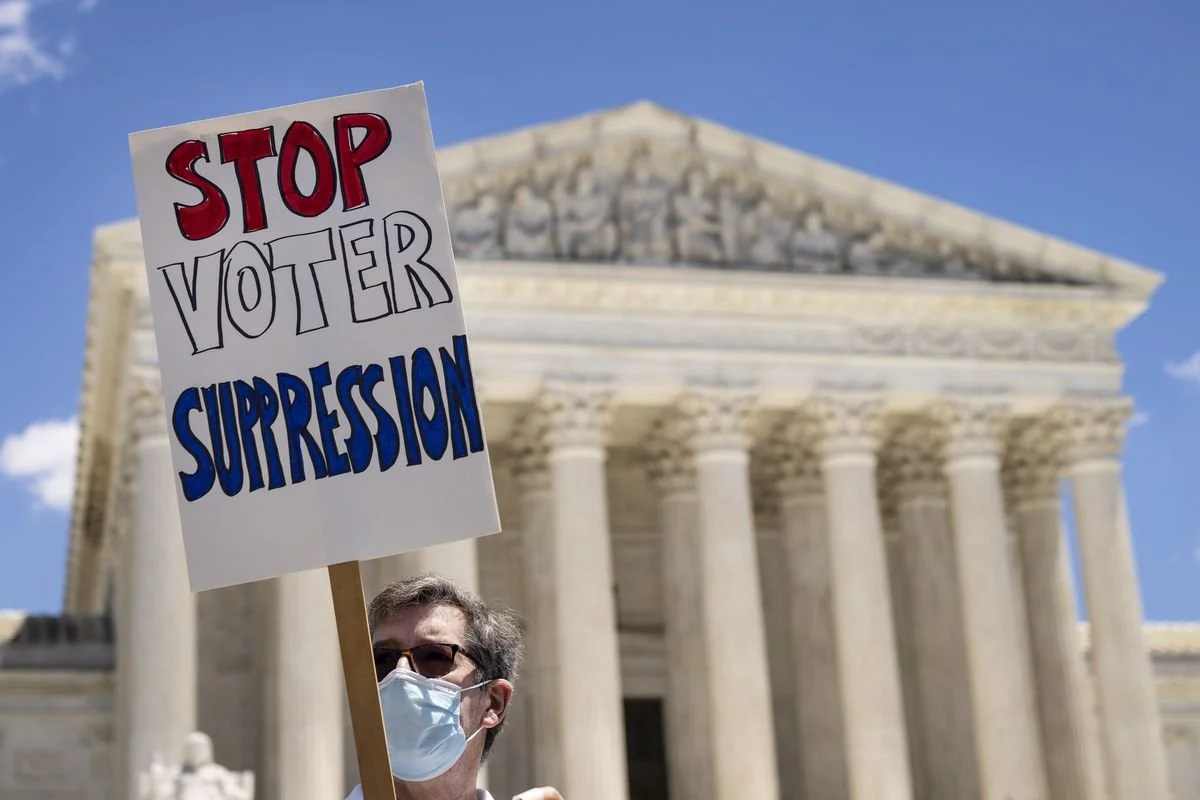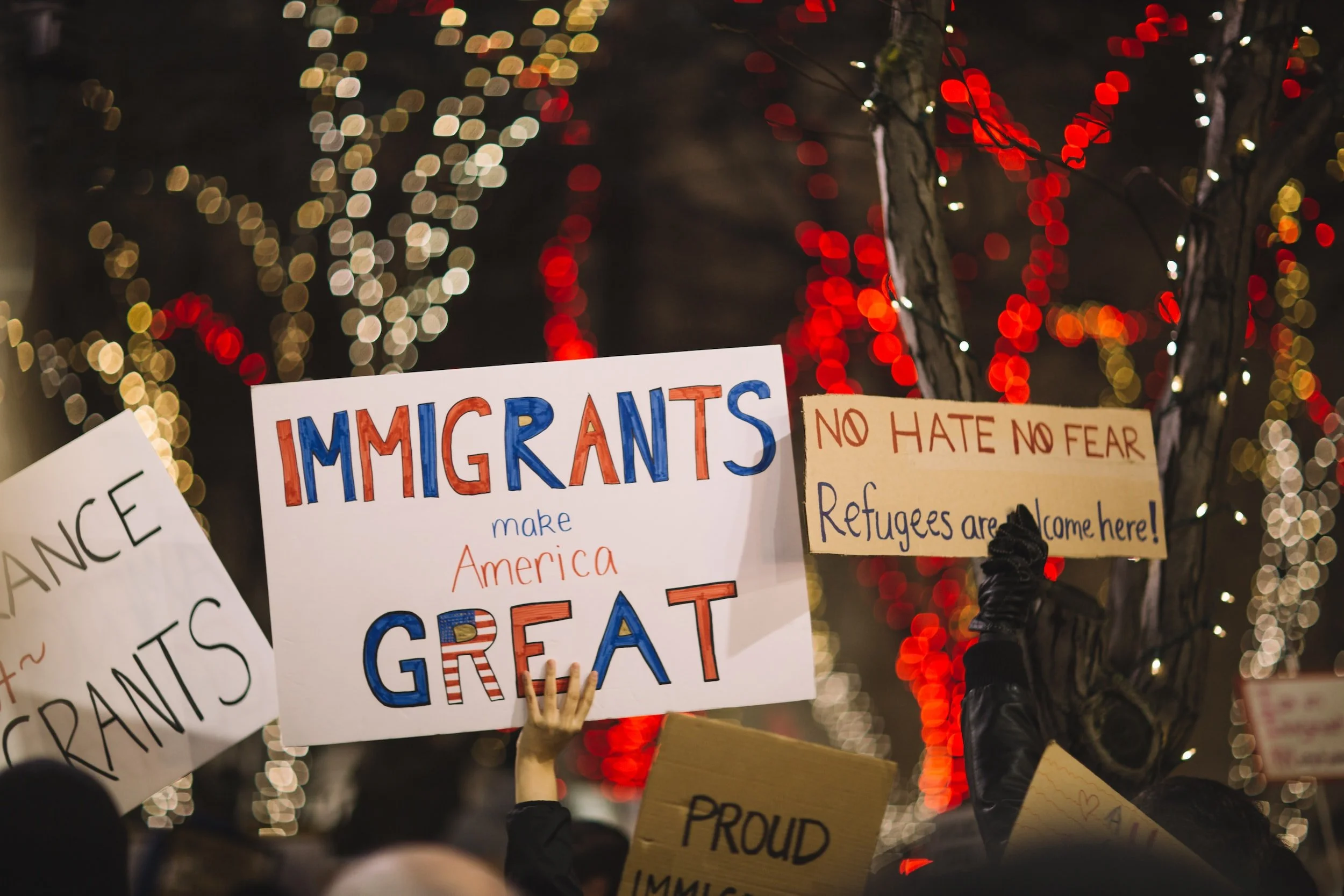Five Civil Rights Supreme Court Cases to Watch This Term
By Jerry Hartman, Foundation President and Board Chair
Civil rights activists ask with much trepidation how much this term will the conservative Supreme Court, with its 6 to 3 majority, damage the pursuit of social justice in the United States? These five cases, described below, pose the threat of the loss of valued and treasured civil rights.
1. Students for Fair Admissions v. Harvard College and Students for Fair Admissions v. University of North Carolina
Should college race-conscious admissions programs at Harvard and the University of North Carolina that benefit primarily Black applicants at the expense of Asian-American applicants be held to be unconstitutional for violating the equal protection clause of the Fourteenth Amendment to the United States Constitution (Harvard case) and Title VI of the Civil Rights Act of 1964 (North Carolina case) for receiving money from the federal government in violation of the proscription prohibiting discrimination based on race?
Photo Credit: AP Photo/J. Scott Applewhite
Affirmative action in college admissions is before the Supreme Court for the first time since its 2003 decision in Grutter v. Bollinger. In that decision, the Court held that the University of Michigan Law School’s race-conscious admissions program did not violate the Fourteenth Amendment or Title VI so long as the use of race is narrowly tailored to further a compelling governmental interest defined as the need to obtain the educational benefits that flow from a diverse student body that cannot be a quota system where school administrators considered race-neutral alternatives.
As Supreme Court advocates say, it was a “hot bench” with over five hours of argument time for the two cases. The justices, nor counsel for the parties, could not agree on what diversity means or how to measure it. Justice Kavanaugh commented why should colleges not ask about religious diversity as well as race. In response, to Harvard’s position that racial preferences were small, Chief Justice Roberts said, “so there’s only a little racial discrimination in the case.”
The justification for race-conscious admissions was raised by Justice Powell in his solo opinion in Regents of the University of California v. Bakke in 1978 where he wrote that making race the determining factor violated the Constitution. Some Supreme Court commentators ask are the days numbered for the rationale of diversity? Others question whether the Fourteenth Amendment’s history of aiming to eradicate the vestiges of slavery when it was passed in 1866, ratified in 1868, had an inherent aim of fostering race consciousness as suggested by Justice Jackson in the Merrill case discussed below. Was not that Amendment, along with the Thirteenth and Fifteenth Amendments, as progressive Americans argue, aimed at redistributing economic and political power to Black Americans by requiring Congress to provide them land, education, the franchise, and equal rights?
2. 303 Creative v. Elenis
Will the right of free speech give way to a public-accommodation law prohibiting discrimination?
This issue has surely created much public debate. The facts of the case are disarmingly simple. A web designer for wedding websites, Lorie Smith, does not want to design websites for same-sex marriages. This belief, she claims, is protected by the First Amendment’s free speech clause while the Colorado Anti-Discrimination Act prohibits businesses open to the public from discriminating based on sexual orientation by not only refusing to provide services but also by publishing a communication that states an individual’s patronage is unwelcome because of a protected characteristic. The lower courts found in favor of the Colorado Commission. The Supreme Court did not accept for review a challenge based on the First Amendment’s free exercise of religion clause.
This same Colorado law was challenged in the 2018 bakeshop case, Masterpiece Cake Shop v. Colorado Civil Rights Commission, where the owner refused to bake a custom wedding cake for same-sex couples because it violated his religious beliefs. The Supreme Court did not address the issue; instead holding that the Colorado Civil Rights Commission displayed impermissible hostility to the owner’s sincere religious beliefs and accordingly was entitled to have a neutral decisionmaker decide the case.
As suggested at the oral argument of the case by Justice Barrett, the case comes down to the message, not the sexuality of the couple. Justice Sotomayor saw it differently in her observation during the oral argument that the Supreme Court would be ruling for the first time that a commercial business, open to and serving the public, could refuse to serve a customer based upon sex, race, religion, or sexual orientation. Interestingly, Smith had sued pre-emptively to seek a ruling having not turned down any gay customers or faced punishment. This caused the Justices frustration forcing them to examine hypothetical situations.
3. Moore v. Harper and Merrill v. Milligan
Should state legislatures have the power to make the rules for federal elections—the so-called “independent state legislature theory?”
Photo Credit: Drew Angerer/Getty Images
Republicans in North Carolina argued that the state legislature has independent power, unreviewable by state courts, to set election rules at odds with the state constitution, including drawing congressional voting maps steeped in partisan gerrymandering.
In 2021, North Carolina legislators withdrew the state’s congressional map. At that time, the state had 13 districts. Voters were generally evenly divided amongst Democrats and Republicans. Republicans, in control of the legislature, redrew the maps so ten districts favored them. Democratic Party-affiliated voters challenged the redistricting as being gerrymandering in violation of the state constitution. This new voting map drawn by the North Carolina legislature was rejected by the North Carolina Supreme Court which found that the state legislature was overreaching. Republican state legislators sought Supreme Court review which was granted in June of 2022.
The case turns on the Elections Clause in the United States Constitution which states in Article 1, Section 4, that elections “shall be prescribed in each state by the legislature thereof.” The case could call into question numerous provisions in various state constitutions, including, for example, the secret ballot, automatic voter registration, regulations governing voter machine registration, ranked-choice voting, and voting machine testing procedures. Questions about the validity of such procedures when questioned would come before federal judges opening the door, say opponents of the theory, to a flood of federal voting rights litigation upending the very federalism defining American government.
In a previous decision three years ago in Rucho v. Common Cause, Justice Roberts, writing for the conservative majority, found that federal courts should play no role in such disputes and should be addressed by state courts. A favorable decision accepting the theory could give state legislatures much broader authority over federal elections without oversight by state courts, thereby leading to an onslaught of federal litigation. In essence, this is a “who rules question” whether state courts given authority by state statute to review legislatively enacted congressional plans, undiminished by the Federal Elections Clause, should be able to interpret their own state constitutions? Of course, this all harks back in an analogous way to the Bush v. Gore decision where Chief Justice Rehnquist, in a concurrence, sided with the Florida state legislature favoring Bush against the Florida state court favoring Gore.
In a parallel case, Merrill v. Milligan, voters in Alabama sued Alabama state legislators arguing that the congressional map enacted by Republican legislators in November 2021 for its seven United States House of Representative seats unfairly distributed Black voters in violation of Section 2 of the Voting Rights Act of 1965. That Act enforces the Fifteenth Amendment of the United States Constitution which guarantees that the right of citizens to vote shall not be denied based on race. The Voting Rights Act prohibits state and local governments from passing laws that result in discrimination against a racial group.
The plaintiffs asked a three-judge federal district court (required to make that decision under the Voting Rights Act) to include a second majority-Black district. The judges enjoined the plan, but the Supreme Court stayed that injunction in a 5-to-4 decision and granted review on the merits in the case challenging the congressional map.
The case is broader than a voting rights case for it goes to the deeper question of the meaning of the equal protection clause of the Fourteenth Amendment. Predictably, the Alabama Attorney General in oral argument asserted that the state could create voting districts only in a neutral fashion. Justice Jackson gave him a history lesson as to why that reading of the Fourteenth Amendment was wrong. She said that it was adopted in a race-conscious way as shown by its “history and tradition.” The conservative justices at the argument appeared unswayed. Recall the reference to “history and tradition” which Justice Alito argued provided no support for an abortion in his decision in Dobbs v. Jackson Women’s Health Organization.
4. United States v. Texas
Can the federal government regulate immigration without interference from the courts?
Immigration cases populate in significant numbers the dockets of the federal district courts. These cases often involve the review of federal government guidelines regulating immigration. This case’s tortuous procedural path stems from an initial challenge to the Biden administration’s enforcement guidelines issued in January 2021 asserting the lack of resources to deport every illegal alien in the United States that prioritized certain groups of aliens (terrorists, felons, and individuals caught at the border) for deportation and arrest (A guidance is a document created by the federal government to explain and clarify its policies but is not binding as are rules issued pursuant to the Administrative Procedure Act.)
Ultimately, a final guidance was issued in September 2021 that was reviewed by the federal district court in February 2022. It found that the final guidance violated the Administrative Procedure Act. The United States Court of Appeals for the Fifth Circuit denied a stay of that decision pending appeal. The Supreme Court will have to decide whether the final guidance violates federal immigration law (8 U.S.C 1226 (c) and 1231), whether a particular statutory provision related to administration of immigration (8 U.S.C. 1252 (f)(1) precludes review of the guidance, and whether the states challenging the final guidance have standing to do so. The states contend that they are suffering financial harm by having to keep noncitizens in state prisons longer than they otherwise would.
Putting aside the challenges to Biden administration immigration policies, the case presents, according to the United States Solicitor General in its petition for review, the “troubling trend” of states suing the federal government on the downstream effect of federal policies and federal district court judges entering nationwide relief thereby taking the “judicial power beyond its traditionally understood uses.” The Solicitor General gave as an example that California filed 122 lawsuits against the Trump administration. These suits, says the Solicitor General, are inconsistent with the Constitution and enmesh the judiciary in disputes between the states and the federal government that should be resolved by the democratic process.
5. Haagland v. Brackeen (Consolidated with Cherokee Nation v. Brackeen, Texas v. Haaland, Brackeen v. Haaland)
Is the categorization of Native Americans political or racial under the Indian Child Welfare Act of 1978 (ICWA) which discriminates by giving preference for adopting Native American children to Native Americans rather than arguably the best home?
Photo Credit: Mariam Zuhaib / Associated Press
Determination of the issue could have broad implications for preserving tribal political autonomy. Many laws with respect to tribal matters are based upon tribal status. Should that status be deemed a racial classification rather than a political one, that law could be challenged as being racially discriminatory.
Facts in the case show that Native American children are disproportionately more likely to be removed from their families and tribes than other children (government’s petition for certiorari). Several white families who have attempted to adopt Native American children—along with several states—want the law declared unconstitutional for discriminating based on race. Several tribes intervened in the case by arguing in support of the law. (A brief filed by the Native American Rights Fund was endorsed by 497 tribes and other briefs in support were signed by 87 members of Congress.)
In defending the constitutionality of the ICWA, the United States asserted that the federal government has an interest in promoting the placement of Native American children in settings that are most likely to foster a connection with their Indian tribes and culture as part of its responsibility under federal law for the protection and preservation of tribes and their resources. It was a well-known fact that at the time of the law’s passage 25 to 35 percent of Native American children were removed from their families as part of a centuries old United States policy of forcibly assimilating Native American children into white families to erase their culture.
The case raises the issues of whether the individual plaintiffs had standing in showing the required harm to challenge the placement under the ICWA’s provisions with “other Indian families” and “Indian foster homes” and whether its provisions violate the anti-commandeering doctrine of the Tenth Amendment by imposing duties on the states based on federal law. (Congress under that amendment may not “issue direct orders to the governments of the States.”) The orders in question were requiring state agencies to provide notice of custody hearings to the parent and the tribe and assist individuals in preferred placements. The government arguing that the ICWA is constitutional asserts no such violation occurs when the federal law confers preferential rights on private actors such as Native American families and such actions preempts state law that conflicts with it. The lower Federal Court of Appeals for the Fifth Circuit affirmed that the plaintiffs had standing but found a violation of the Tenth Amendment.
Supporters of the law argue that its enactment preserves the goal of tribal political autonomy. Justice Gorsuch, a proponent of tribal rights, indicated at oral argument strong support for the law, as did the three liberal justices on the court, but uncertainty exists whether one of the conservative justices will join them. In McGirt v. Oklahoma, the Supreme Court ruled in a 5-to-4 decision, written by Justice Gorsuch, that much of eastern Oklahoma falls within an Indian reservation. It answered the question whether certain lands of the Creek Nation under past treaties remained a reservation after Oklahoma became a state. That ruling put into question past criminal convictions that occurred in state court as contrasted to tribal courts. Will the Supreme Court follow McGirt to preserve tribal rights?
Conclusion
One could rationally ask why are the decisions that the Supreme Court will render this term so dear to the liberal principles upon which this Country were built? Must we not ask the authors, Joseph Fishkin and William Forbath, stated in their recent book, The Anti-Oligarchy Constitution: Reconstructing the Economic Foundations of American Democracy, whether using judicial power to override previously protected civil rights flies in the face of the very values that earlier generations achieved that were consistent with the visions of Madison and Jefferson for a stable republic built upon a broad dispersal of wealth, property, and political and economic power?
The harms to our basic civil rights that will come from adverse decisions in the cases described above, especially the ones diminishing affirmative action in college admissions and race-conscious protections for equal opportunity in voting, is extremely troublesome when there exists no opportunity soon for a legislative override with the Republicans having a majority in the House of Representatives.
As Professor Mark Lemley writes in the Harvard Law Review article entitled, The Imperial Supreme Court, the Supreme Court has been consolidating its power at the expense of the other branches of government to the detriment of individual rights. This accession of power by the Supreme Court was reported on December 20, 2022, by The New York Times in Adam Liptak’s article, Amassing of Power by Supreme Court Alarms Scholars, that pointed to a number of law review articles and studies reaching that conclusion.
The Foundation and its affiliate, The Barbara McDowell Public Interest Law Center, will continue, in the face of these possible changes stemming from the upcoming decisions of the Supreme Court, to make grants to social justice organizations that protects and fights for the civil rights of individuals and will bring litigation that will foster opportunities for social justice reform.

